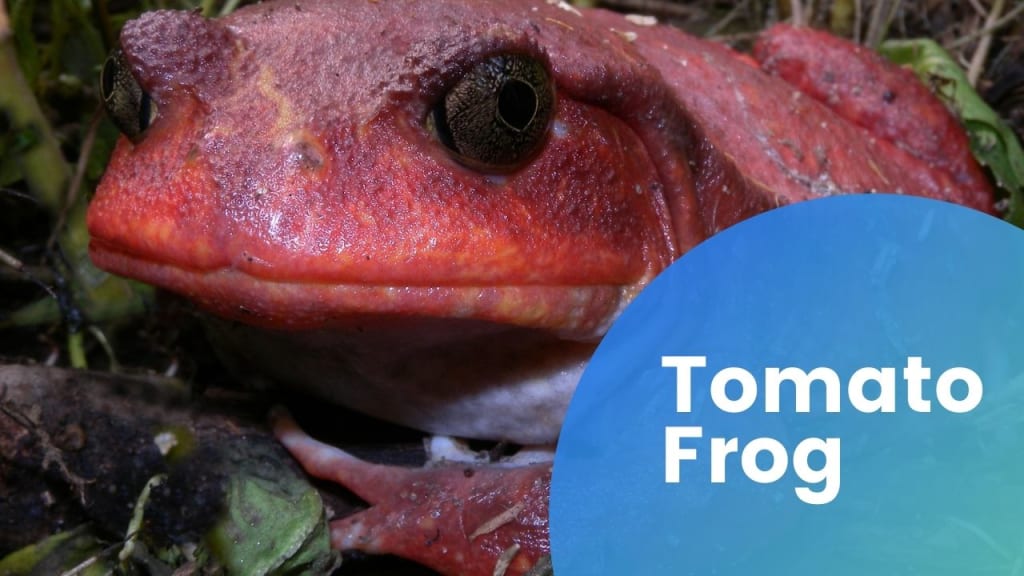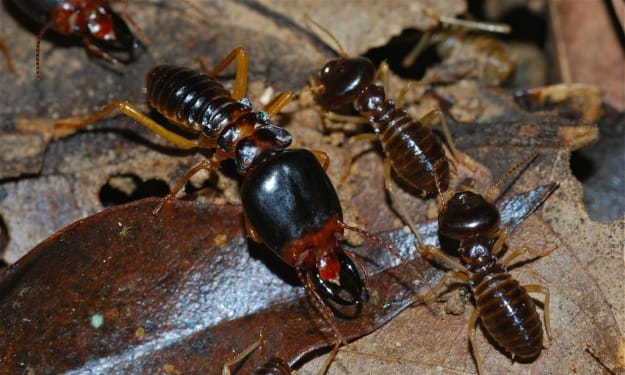The Tomato Frog: A Rare Amphibian You Need To Know About
Get to know this little guy.

So you have decided, you want a pet frog! Cool, but now comes the hard part. What species to get?
You want a small, cute one that is easy to care for. In this article, I will talk about my favorite one, and maybe you will like it too.
Keep Reading.
Tomato Frog
Tomato frogs are a species of frog found in northern Madagascar. They are so named because of their bright red skin, which is covered in small bumps that look like tomatoes. Tomato frogs live in rainforest habitats and swamps, where they eat insects, spiders, and other small invertebrates. They are also known to feed on tadpoles and young fish. Tomato frogs grow up to 4 inches long and are typically active at night. During the day, they hide in vegetation or under rocks. These frogs are not commonly seen in the wild, but they can be bred in captivity.
How poisonous are tomato frogs?
Tomato frogs (Dyscophus antongilii) are small, brightly-colored creatures that are found in the forests of Madagascar. They are also known as red-and-black dart frogs because of their distinctive markings. Tomato frogs are relatively common in their natural environment, but they can also be found in captivity.
Tomato frogs are not considered to be particularly poisonous, but they can produce a toxin called antamone. This toxin can cause skin irritation and vomiting in humans. Antamone is also toxic to dogs, cats, and other animals.
Can you handle a tomato frog?
Yes, you can pick up and handle a tomato frog without any problems. They are not poisonous, and they do not have any sharp spikes on their skin. In fact, they are quite docile and will not try to escape from you. But keep in mind that they can cause allergies in humans.
Is a tomato frog rare?
The tomato frog is classified as Near Threatened (NT) on the IUCN Red List because its population is declining. The main threats to the species are loss of habitat, fragmentation of populations, and introduced predators.
What size tank does a tomato frog need?
They are easy to care for and do not require a large tank. A 20-gallon tank is plenty big enough for a single tomato frog. If you want to keep more than one frog, make sure the tank is at least 30 gallons.
Tomato frogs need a moist environment with plenty of hiding places. You can create this environment by adding some live plants and waterfalls. Be sure to provide a large, shallow water dish for the frogs to soak in.
Diet
Tomato frogs feed on a variety of small invertebrates, such as insects, insect larvae and worms. They are especially fond of ants, which they eat by flipping them onto their backs and sucking out the contents of their heads. Tomato frogs also eat spiders, mites and other small arthropods.
How often do you feed a tomato frog?
Tomato frogs (Dyscophus antongilii) are a small species of frog found in the rainforests of Madagascar. These frogs have a diet that consists mainly of insects, which they capture by ambush. A good diet for tomato frogs is three to six crickets per frog, fed several times each week.
Can tomato frogs be kept alone?
These frogs are solitary creatures and can exhibit cannibalistic behaviors, so they should generally only be kept one per terrarium. They make great pets for those who are interested in keeping a small, easy-to-care-for amphibian. Tomato frogs require a moist environment with plenty of live plants to hide in. They eat a variety of insects, so provide them with a varied diet of crickets, meal worms, and wax worms.
Temperament
Tomato frogs, also known as red-eyed tree frogs, are a species of frog that is native to Central and South America. These frogs are secretive creatures, and while adult tomato frogs can become somewhat tame, at best they will only tolerate handling. So avoid handling them if you can.
Do tomato frog bite?
The tomato frog is a small, brightly colored amphibian found in the rainforests of Central and South America. These frogs get their name from the red coloring on their underside, which resembles a ripe tomato. Tomato frogs are unique in that they can inflate their bodies when threatened, making them look much larger than they actually are. In addition to their impressive size, tomato frogs also have an interesting defense mechanism against predators. If bitten, these frogs secrete a thick oozy substance through the holes in their porous skin. This sticky substance is unpleasant to taste and often deters predators from continuing to pursue the frog.
Do tomato frogs need a heating pad?
Tomato frogs do well at temperatures between 65 and 80 degrees Fahrenheit. If the ambient temperature in your home is below that, a heat pad is needed to keep them at a comfortable temperature. Frogs will hibernate if the temperature falls below 50 degrees Fahrenheit, so it is important to make sure they have a warm place to live.
Do tomato frogs swim?
Tomato frogs are unique creatures. They are amphibians, which means they live in both water and on land, but surprisingly, even though they're amphibians, they can't swim very well and sometimes even drown! Being nocturnal, tomato frogs move around and hunt at night. During the day, they like to hide in trees or under leaves.
Price
Tomato frogs, are a popular exotic pet. They are usually found for sale between the prices of $20 and $50, but private breeders will charge closer to $50. Juveniles and adults are very easy to find, as they are common pet frog. Tomato frogs make great pets for those who want an exotic animal that is relatively low maintenance.
Conclusion
In conclusion, the tomato frog is a small, but interesting pet frog that can be found in parts of Madagascar. These frogs have a bright red coloring and are easy to care for, making them a great option for a beginner frog keeper. They are active and playful, and their small size makes them perfect for homes with limited space. If you're interested in adding a frog to your family, the tomato frog is a great choice!







Comments (1)
This is an excellent Top Story, we are featuring it in our Community Adventure series and would love you to join us in Vocal Social Society if you are on Facebook